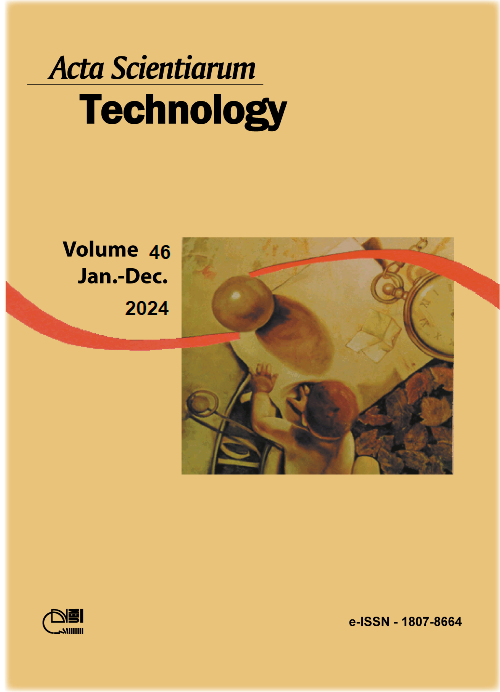Effective width of steel-concrete composite box girder bridges: a review and method comparison
DOI:
https://doi.org/10.4025/actascitechnol.v46i1.64764Keywords:
shear lag effect; normal stresses; literature review.Abstract
Steel-concrete composite girders have non-uniform stress distribution on the slab, presenting maximum stresses next to the webs of the girder. This phenomenon is known as shear lag effect. To understand this effect, there is the effective width concept, in which only a portion of the slab width is considered effective in contributing to the composite element´s resistant capacity. However, in the technical standards, there is no recommendation for calculating the effective width in steel-concrete composite box girder bridges. In view of this situation, the purpose of this paper is to carry out a systematic review on effective width and/or the shear lag effect in steel-concrete composite bridges, in order to raise the main existing recommendations and compare them. Through a bibliometric scan with carefully chosen keywords, it was found that of all research on shear lag or effective width in steel-concrete composite structures, only 31.19 are on bridges and 14.97% are on bridges with box girders. Among the papers, those that have a method for calculating the effective width of steel-concrete composite girder bridges have been compared quantitatively and qualitatively with the procedures of AASHTO and EN 1994-2-2. In these procedures were also identified that the, for the boundary conditions of the present paper, the parameters that most influencing the effective width are, in that order, the span length, the distance between girders, the concrete slab height, the longitudinal position and the type of load.
Downloads
Downloads
Published
How to Cite
Issue
Section
License
DECLARATION OF ORIGINALITY AND COPYRIGHTS
I Declare that current article is original and has not been submitted for publication, in part or in whole, to any other national or international journal.
The copyrights belong exclusively to the authors. Published content is licensed under Creative Commons Attribution 4.0 (CC BY 4.0) guidelines, which allows sharing (copy and distribution of the material in any medium or format) and adaptation (remix, transform, and build upon the material) for any purpose, even commercially, under the terms of attribution.
Read this link for further information on how to use CC BY 4.0 properly.











8.png)




